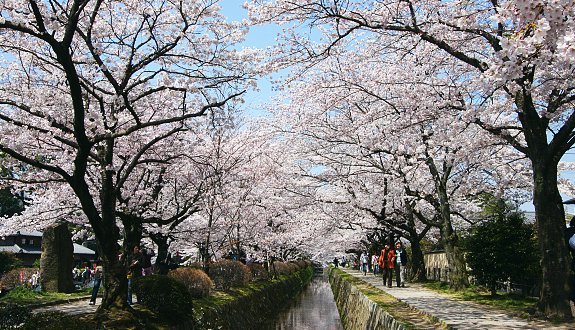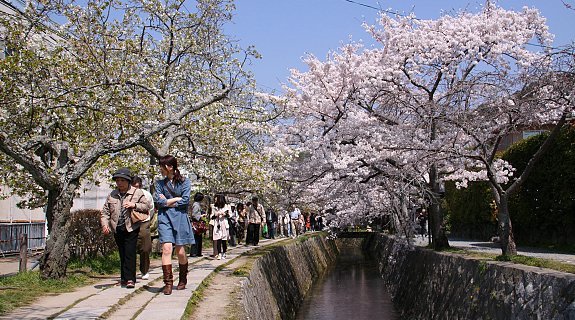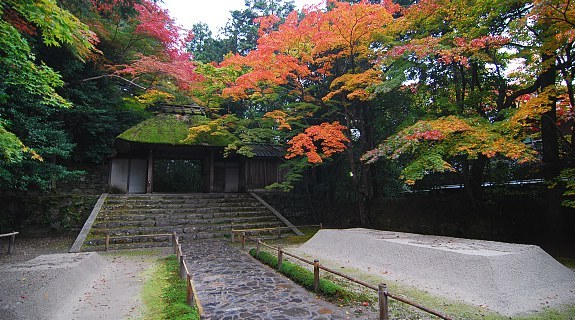
Kazuo Shiraga, Work II, 1958, oil on paper.
From “Gutai: Splendid Playground.”
HYŌGO PREFECTURAL MUSEUM OF ART, KOBE
In the West, contemporary Asian art is often perceived as having developed in response to globalization and the proliferation of new art centers around the world over the past ten years. But Japan’s contemporary-art history is actually far more complex and long-standing, going back at least as far as the end of World War II, the bombing of Hiroshima, and the U.S. military occupation. Surprisingly (to the Western audience at least), the art that came out of this period was not solely about destruction, but also about rebellion and self-determination.
Too little attention has been paid to Japan’s postwar art in the West, with the exception of the groundbreaking 1994 exhibition “
Scream Against the Sky,” organized by the then-director of Japan Society Gallery, Alexandra Munroe, with the Guggenheim Museum, the Asian Art Museum of San Francisco, and the Japan Foundation, as well as the 2007 show “
Art, Anti-Art, Non-Art: Experimentations in the Public Sphere in Postwar Japan, 1950–1970” at the Getty Museum.
Now, however, several important museum and gallery exhibitions are shedding new light on the era. In November, the Museum of Modern Art in New York opened “
Tokyo 1955–1970: A New Avant-Garde,” organized by associate curator Doryun Chong. In February the Guggenheim Museum will open “
Gutai: Splendid Playground,” curated by Munroe, now at the Guggenheim, and Ming Tiampo, associate professor of art history at Carleton University in Ottawa.
Elsewhere, “
Destroy the Picture: Painting the Void, 1949–1962,” an exhibition that featured an international array of artists, including Gutai participants, opened at the Museum of Contemporary Art, Los Angeles this fall. L.A.’s Blum & Poe gallery organized an exhibition, “
Requiem for the Sun: The Art of Mono-ha,” last year, which later traveled to Barbara Gladstone Gallery in New York. Hauser & Wirth, also in New York, had a show of Gutai paintings in September, and Samuel Dorsky Museum of Art at SUNY Purchase, New Paltz, New York, presented “
Shinohara Pops! The Avant-Garde Road, Tokyo/New York,” curated by Hiroki Ikegami with Reiko Tomii.
Works by Gutai—an association of radical artists founded by Jiro Yoshihara, whose practices included shooting paint onto a canvas with a cannon and plunging through laminated rice-paper screens—can sell for as little as $50,000 and as much as $1 million, according to a sales associate at Hauser & Wirth. The group Mono-ha, made up of Minimalist artists who favored sculptures composed of natural materials, has only recently developed a market, with prices running from $300,000 to $500,000. “It’s as if no one in the West had shown arte povera and suddenly it was discovered,” says Tim Blum of Blum & Poe, which recently opened a gallery in Japan. The Korean artist Lee Ufan, who was a key figure in Mono-ha and was the subject of a retrospective at the Guggenheim in 2011, is represented by Blum & Poe and Pace Gallery, where his minimalist canvases can sell for more than $1 million.
“Since the ’90s, Takashi Murakami and Nara have been darlings of the art world, but I don’t think we have seen the full spectrum of art coming out of Japan,” says MoMA curator Chong, whose exhibition includes works by 60 Tokyo artists, architects, and graphic designers who were all active from the late-’50s through the ’60s. “Perhaps now the audience is ready to look at artists from a different part of the world in more historical terms, with movements that grew out of their own national conditions but were informed by international exchanges of ideas.”
A number of factors during the postwar period, Chong explains, made Tokyo in particular a hotbed of artistic activity. First, Japan was recovering from a crushing defeat and an overhaul of deeply embedded cultural ideas—the emperor himself was stripped of his status as a deity. Second, Tokyo and much of the rest of Japan were going through a rapid reconstruction as the country was on its way to becoming an economic world leader. But perhaps most important, Japan already had a long modernist tradition that extended back to the 1870s, when the country opened its doors to the West. In short, Japanese artists had much to react to and comment on while also having a foundation in 20th-century modernist movements.
“Japan’s wholesale reconstruction in the first postwar decade and the period that followed was so thorough that it had to be engaged not only on the social and spatial strata, but also on the levels of the individual and of the body itself,” writes Chong in his catalogue essay. Japanese artists responded to these changes by challenging art forms and exploring exhibition possibilities beyond traditional galleries and museums—showing in theaters, subway stations, and on the street.
While a surrealist style of figurative painting dominated the immediate postwar period, it was soon superceded by experimental performative events created by artists’ collectives. Especially influential at this time was Jikken Kobo (Experimental Workshop), founded in 1951 by 14 people, among them artists, an architect, a lighting designer, an engineer, a composer, and a choreographer. Its inaugural event was
The Joy of Life, a ballet set to music by leading European and American 20th-century composers that introduced a modern form of Noh dance. Jikken Kobo, the subject of a
retrospectiveat Bétonsalon in Paris last January, was in constant contact with artists in the West, including John Cage, who came to Japan at Yoko Ono’s invitation in 1961. His visit caused such a sensation in Tokyo that the reaction was coined “Cage Shock.” Other important groups included Hi-Red Center, the Sogetsu Ikebana School, and Tokyo Fluxus.
Yoko Ono and Yayoi Kusama—two artists who have emerged as international art stars—came of age during this period, but as women and frequent travelers to New York, they stood somewhat apart from this scene. Kusama, known for her stunningly obsessive paintings and environments covered in polka dots, was the subject of a major retrospective at
Tate Modern and
the Whitney Museum this past year. She lived in the United States from 1957 to 1973. Ono, who originally moved to New York with her family when she was a teenager and attended Sarah Lawrence College, spent two years in Japan in the early ’60s, bringing with her the inspiration and ideas of Fluxus. Ono was the subject of a retrospective, “
YES Yoko Ono,” at the Japan Society in 2000–1.
“Bid farewell to these hoaxes piled up on the altars and in the palaces, the drawing rooms, and the antique shops . . . lock up these corpses in the graveyards,” Jiro Yoshihara demanded in his 1956 Gutai Manifesto. Reflecting the evolution of the Japanese people from subjects of a war-oriented totalitarian regime to citizens of a democratic society, the Gutai Art Association created works that defied artistic traditions, through either the use of unconventional materials or the performative and unconventional ways in which they were made. During the early years of the group, Gutai member Kazuo Shiraga would wrestle in mud or hang from a ceiling while painting canvases with his feet; Shozo Shimamoto would crash through paper screens; and Atsuko Tanaka performed in her 1956Electric Dress, made of lightbulbs.
“Gutai was acknowledged as coming first by all of the great heroes of avant-garde history, including Allan Kaprow in his groundbreaking 1966 book, Assemblages, Environments and Happenings,” says Munroe, who was the first American curator to bring Gutai works to the United States. According to Munroe, Gutai’s early period was a celebration of individuality, but its work in the 1960s challenged the blatant commercialism of Japanese society during its economic expansion, leading up to Expo ’70. Gutai was also engaged in international dialogue with its peers in the West. The group distributed a highly influential journal to artists, critics, and curators throughout Europe and the United States, which led to the group being discovered by French critic Michel Tapié, a proponent of art informel. He met Yoshihara in 1957 in Japan and brought Gutai artworks to the Martha Jackson Gallery in New York, now the home of Hauser & Wirth. “Our own history of modern art,” Munroe points out, “needs to have a wider conversation, because, in fact, if we look deeper into it, we find many intersections with Gutai, but they have been dismissed and forgotten.”
“The struggle for freedom was uniquely felt in Japan at that time after World War II, and Jiro Yoshihara in his manifestos spoke about the spirit of freedom,” says independent curator Midori Nishizawa, who organized Hauser & Wirth’s show of Gutai paintings last fall. Often confused with Abstract Expressionism and sometimes criticized as being overly influenced by art informel, “Gutai artists’ work challenges us to think about our own selves: how free are we?” says Nishizawa. “It speaks beyond the confines of art, and over the 15 years of their existence, they continually challenged the notion of freedom.”
As former L.A. MOCA curator Paul Schimmel, who featured Gutai artists in the show “Destroy the Picture: Painting the Void,” observes, “As unique as the experience of the war and the bomb is to Japan, Gutai also shares a common language with the kind of destruction that was happening all over Europe, and, frankly, with the impact it had on artists.” Schimmel believes it is a mistake to think of Gutai’s paintings and other artworks as being derivative of Western art. Shiraga, painting with his feet, preceded Yves Klein’s use of the body by several years. (Indeed, Klein visited Japan at the time.) And both Shimamoto and Saburo Murakami chose to puncture screens almost simultaneously with Lucio Fontana’s slicing of canvases.
Works like these represent a radical departure for a country “that revered two-dimensional screen painting,” says Schimmel. Visitors to his show must step through Entrance (1955), a work created by delivering a karate chop to a thick paper screen. It must be re-created each time it is presented, and the artist, who is still alive but cannot travel, gave Schimmel permission to enact the work. “My first attempt was not successful,” Schimmel recalls. “The paper was much harder than I had imagined, and I kind of bounced off it initially. This time, I made sure I hit it with all my force.”
Preserving such work and marketing it is a challenge, one faced by Blum of Blum & Poe, whose spring exhibition revived interest in a movement founded at the height of student protests in Japan in the late-’60s. Working with basic materials, such as stone, wood, glass, and raw industrial steel, Mono-ha artists made minimalist works that beg to be contemplated, placing the experiential over the visual. “Mono-ha artists were dealing with a fundamental reevaluation of what art is and what material is,” says Hirshhorn Museum curator Mika Yoshitake, who helped organize the show and wrote the catalogue essay. “It was a time when Japan was really trying to follow everything that was going on in the United States, from Pop art to Assemblage. But at this time, there was also questioning of Japan’s relationship to the U.S. and Japan’s role in the Vietnam War.”
In keeping with an antimaterialistic ethos, many Mono-ha artists made works meant to deteriorate or be destroyed. Blum had to re-create Noriyuki Haraguchi’s 1970 untitled sculpture made of an industrial eyebeam that tilts back and is kept in place by only a steel wire anchored to a boulder; he also had to redo Nobuo Sekine’s Phase Mother Earth (1969/2012), an eight-foot-wide cyclinder of earth bored out of the ground and left standing beside the eight-foot-wide hole. In order to make such projects saleable, Blum drafted a manual for each work with instructions for assembly in the future. These were provided to new owners, such as the Dallas Museum of Art, which, in collaboration with Texas collectors Howard Rachofsky and Deedie Rose, bought several works from the exhibition.
“The tsunami and nuclear disaster at Fukushima are quite pertinent in terms of public interest in Japan, but all of these projects have been underway for a number of years,” says Munroe, whose catalogue for “Scream Against the Sky” provided the first textbook, in English or Japanese, on the postwar period of art production. Representing a new generation of scholarship are people like Miwako Tezuka, newly appointed director of the Japan Society, and Reiko Tomii, who together founded
PoNJA-GenKon in 2003, a listserv and network between scholars working on post-1945 Japanese art. “We’re a new generation who are coming out of our research phase and finally presenting these works just now,” says the Hirshhorn’s Yoshitake.
For MoMA’s Chong, Japan is the obvious choice for scholarship and exhibitions. “Japan has had the longest uninterrupted history of modern art, and in order to understand the histories of Indian or Chinese art, you have to have a grasp of what happened in Japan,” says Chong. “The scholarship is really growing, and I think Western institutions like ours will have to turn our attention and work back to these histories.”
Barbara Pollack is a contributing editor of ARTnews.
Copyright 2013, ARTnews LLC



